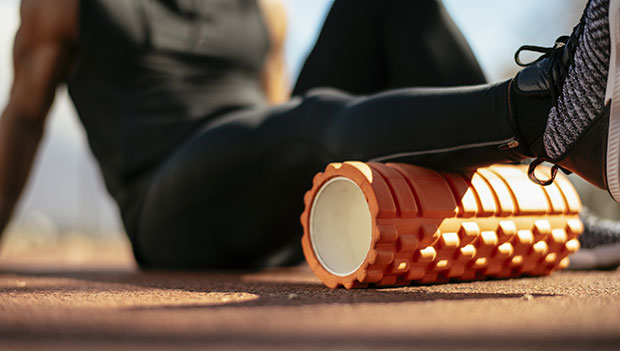
By clicking on the product links in this article, we may receive a commission fee at no cost to you, the reader. Sponsorships and affiliate commissions help support our research so we can help you find the best products. Read our full affiliate disclosure here.
Foam rollers should be a mainstay in any home gym. Not only do they provide that hurts-so-good sensation when you roll out a tight muscle, but regular foam rolling has also been linked to increased muscle gain, better range of motion, improved blood flow, and reduced injury risk. In the physical therapy world, this method of pain management is called self-myofascial release (a fancy phrase that means giving yourself a muscle tissue massage).
The Best Foam Rollers - Our Top Picks
- Best Overall Foam Roller: TriggerPoint GRID Foam Roller
- Best Foam Roller for Runners: Gaiam Restore Total Body Massage
- Best Foam Roller for Neck and Shoulders: The NUCKLE by Aletha Health
- Best Foam Roller for Back: Roll Recovery R4
- Best Travel Foam Roller: Brazyn Morph Bravo Collapsible Roller
- Most Affordable Foam Roller: Gaiam Restore Compact Textured Foam Roller
- Best Vibrating Foam Roller: Trigger Point Grid Vibe Plus
- Best Trigger Point Foam Roller: TRX Rocker Myofascial Tool
- Best Foam Roller for Beginners: Merrithew Flex Therapy Bar
- Best Medium-Density Foam Roller: Yes4All Medium Density
- Best High-Density Foam Roller: ProsourceFit High Density
- Best Budget Foam Roller: Pro-Tec 4x12
If the idea of less muscle soreness or a post-workout cool-down sounds appealing, you're in luck! The ACTIVE Reviews Team has taken a roll call and found the top picks for the best foam rollers that will help you feel like new. Once you've found the best fit, you'll see why foam rollers are recommended by countless massage therapists, physical therapists, and personal trainers.
Why Trust Us?
ACTIVE.com's editorial team relies on the knowledge and experience of fitness and wellness experts including competitive athletes, coaches, physical therapists, nutritionists, and certified trainers. This helps us ensure the products we feature are of the highest standard. Collectively, the team has spent countless hours researching equipment, gear, and recovery tools in order to create the most accurate, authentic content for our readers. Customer satisfaction is also a key part of our review process, which is why we only feature products that are highly rated.
Best Overall Foam Roller - TriggerPoint GRID Foam Roller
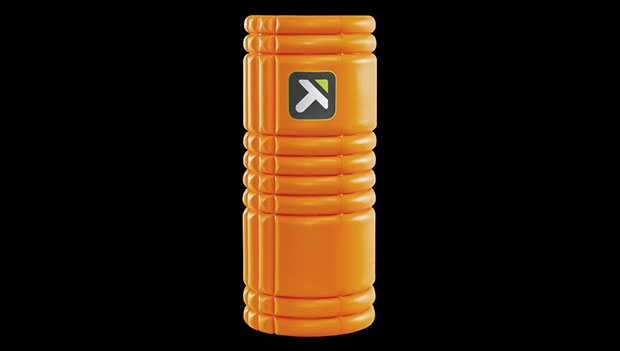
The TriggerPoint GRID Foam Roller is the closest thing you can get to a deep tissue massage without having to go to a masseuse. This foam roller's different ridges mimic the feeling of a massage therapist's hands: The high and firm points are like fingertips, the tubular sections are the "fingers," and the low and flat portion is like the palm. This allows you to customize your self-massage experience every time you use the roller.
For foam rolling beginners, the TriggerPoint GRID Foam Roller comes with access to an online video library, so you can learn how to properly use it for everything from relieving lower back pain to reducing muscle adhesions. And because it's made with extra-firm EVA foam, the same material used on bike seats and MMA gloves, it can withstand thousands of rolls. It also makes it easier to clean after each use.
- Key feature: Textured zones to mimic a massage therapist's hands
- Footprint: 5.5" D x 13" L
- Materials: Hard, hollow core wrapped in EVA foam
BUY: TriggerPoint GRID Foam Roller
Best Foam Roller for Runners - Gaiam Restore Total Body Massage

Runners can put a lot of strain on their joints from hitting the pavement (or treadmill) hard. That's why Gaiam's Restore Total Body Massage Foam Roller works well for cardio fiends. With four textured massage tubes that spin independently, runners can easily target pressure points like the back, quads, and calves for total-body relief. It comes with ergonomic handles for easy gripping, plus a downloadable exercise guide that outlines a multitude of ways to use this roller for pain relief.
Unlike other foam rollers, the Gaiam Restore Total Body Massage uses a slimmer, 18-inch-long design to ease soreness. This is why it's a great pick for runners—the elongated shape and ergonomic handles make it easy to loosen larger leg muscles like the hamstrings, quads, and calves.
- Key feature: 4 independently spinning massage tubes designed for trigger point therapy
- Footprint: 4" D x 21" L
- Materials: Plastic
BUY: Gaiam Restore Total Body Massage
Best Foam Roller for Neck and Shoulders - The NUCKLE by Athleta Health

Designed by physical therapist Christine Noth, the NUCKLE by Athleta Health is the first of its kind for targeting neck, shoulder, and head pain. Noth has worked as a physical therapist (exclusive to Athleta Health) for over 20 years, and it was during this time that she noticed neck tension existed in almost all her clients. She decided to create a tool that her clients could use at home, which is how the NUCKLE was invented.
If you frequently suffer from tension headaches, migraines, jaw pain, or tightness under your traps, you may want to give this tool a try. Using a unique A-shaped design, the NUCKLE targets the tiny muscles (known as the suboccipital muscles) at the base of the skull. This helps release tension and realign your neck and shoulders in a healthy, upright position. These specific muscles can be put under a lot of strain when staring at your computer, phone, or tablet—a common activity in the digital age we live in—so chances are, nearly everyone could benefit from the NUCKLE.
While tennis balls can sometimes be used to mitigate this type of pain, they typically don't address the root cause of the pain. The NUCKLE uses an innovative tip design to focus on the precise muscles that can usually only be released by a physical therapist. You can position the tool under your neck so that the two tips can push into either side of the spine. You can then move the NUCKLE up or down your back to find an area that feels sore and needs some working out. As soon as you find a spot that needs releasing, simply stay in that position for as long as you need to allow the tool to release the muscle tension.
- Key feature: Unique design made to target tiny muscles at the base of the skull
- Footprint: N/A
- Materials: Polycarbonate and rubber, latex-free
Best Foam Roller for Back - Roll Recovery R4
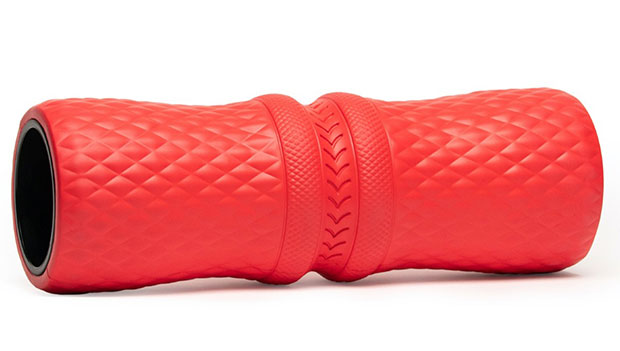
When foam rolling, trying to target your back can prove to be quite the challenge. But the Roll Recovery R4 Foam Roller is made to target these hard-to-reach muscles. With a center groove that's designed to help spine and neck alignment and a diamond pattern that promotes a better grip, this roller makes it easier than ever to relieve back pain. Made from high-density foam, it also uses center support in the core to maintain a strong, stiff structure when rolling over larger muscles.
Elite athletes and physical therapists weighed in during the design process, which explains the Roll Recovery R4's shorter, thicker look. This creates broad sides to its shape, which help cover more surface area.
Here's a good foam rolling tip for the Recovery R4: position the roller horizontally underneath your back to target back muscles like your traps. Gently roll back and forth for maximum relief.
- Key feature: Center groove made to align spine and neck
- Footprint: 6" D x 18" L
- Materials: High-density EVA foam
Best Travel Foam Roller - Brazyn Morph Bravo Collapsible Roller

Muscle tightness waits for nobody's travel plans. That's why people on the go trust the Brazyn Morph Bravo Collapsible Roller for instant massage therapy, regardless of where they are. It has an easily collapsible core, which allows it to shrink to just 1.85 inches in height (about as tall as two T-shirts). When in use, it's the size of a traditional foam roller with the added benefit of having textured ridges all throughout to target multiple muscle groups.
The Brazyn Morph Bravo Collapsible Roller is used by NFL, NBA, and MLB players, along with WWE wrestlers, all of whom know a thing or two about frequent traveling. You might balk at the $69 price tag, but keep in mind this roller had all four Shark Tank judges fighting for a chance to get in on the product. If that's not a sign this is a wise investment, we don't know what is.
- Key feature: Collapsible core for easy portability
- Footprint: 5.5" D x 14.5" L (1.85" H when collapsed)
- Materials: Low-density foam; bamboo and aluminum
BUY: Brazyn Morph Bravo Collapsible Roller
Most Affordable Roller - Gaiam Restore Compact Textured Foam Roller
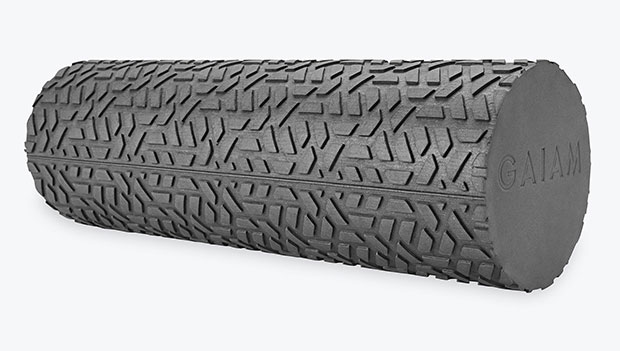
Looking for a quality foam roller that costs less than $20? The Gaiam Compact Texture Roller is a little bigger than an extra-large coffee cup but still does a great job at working the soft tissue and connective tissue (formally known as fascia) of the muscle groups in your arms and legs. Plus, it's textured, ensuring you won't slip while using it.
The Gaiam Restore Compact Foam Roller may be travel-friendly, but because of its compactness, it can only be used on a single limb at a time. People of larger sizes may also have difficulty using it. That said, if you're in the market for a smaller roller, it's great to bring to Pilates class to warm up or have on hand while traveling.
- Key feature: Compact
- Footprint: 4" D x 12" L
- Materials: Textured foam
BUY: Gaiam Restore Compact Textured Foam Roller
Best Vibrating Foam Roller - Trigger Point Grid Vibe Plus

Research has shown that vibrating foam rollers aren't just a gimmick and that they're more effective at penetrating deep into the muscle tissue than traditional rollers. The Trigger Point Grid Vibe Plus comes packed with four vibration settings at varying intensities and a patented multi-density grid surface designed for increased blood circulation and muscle recovery. A rechargeable battery gives you more than two hours of use per charge.
The motor inside the roller is also quiet, so it won't disturb people next to you. And unlike other vibrating rollers, the Trigger Point Grid Vibe Plus is lightweight enough (and cordless) for on-the-go rolling.
- Key feature: Vibrating motor for deeper muscle tissue penetration
- Footprint: 3.5" D x 12" L
- Materials: High-density EVA foam
BUY: Trigger Point Grid Vibe Plus
Best Trigger Point Foam Roller - TRX Rocker Myofascial Tool
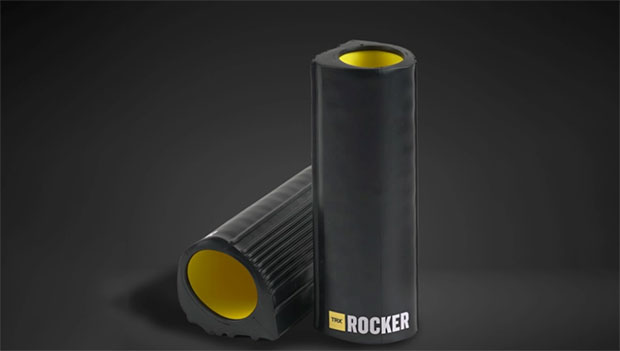
If you've been experiencing more tightness in trigger points like the neck, back, and knees, you're probably long overdue for a good foam rolling session. And the TRX Rocker Myofascial Tool is specifically designed to target these points of tension. With three intensity zones, the TRX Rocker promotes hyper-focused muscle release while allowing you to customize your rolling session to whichever level of intensity works for you.
The low-intensity zone is on the side with ridges, while the medium-intensity zone is on the opposite, more rounded side. If you want to amp it up a notch, use the high-intensity zone (located at the sharper edge on top of the roller) underneath smaller areas like your calf or shoulder for maximum release. An anti-slip surface ensures you can rock back and forth at any intensity without the roller sliding out from beneath you.
- Key feature: 3 intensity zones to target specific trigger points
- Footprint: 13" L and 26" L
- Materials: N/A
BUY: TRX Rocker Myofascial Tool
Best Foam Roller for Beginners - Merrithew Flex Therapy Bar
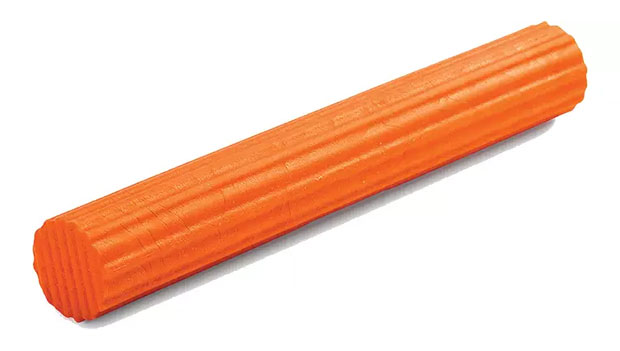
It can be easy to let a foam roller intimidate you if you've never used one before. But the Merrithew Flex Therapy Bar uses a simple, cylindrical design with a textured surface for easier gripping. It uses ridges on either side to help you dig into muscles and release tension.
And thanks to its more elongated shape, you can target a greater surface area in one fell swoop (or roll). The Merrithew Flex Therapy Bar is also lightweight, making it a good pick to take to your next lifting or yoga sesh. Plus, it's priced at just $25, meaning beginners can try out foam rolling without having to splurge.
- Key feature: Easy to use, lightweight
- Footprint: 1.8" D x 12.3" L
- Materials: Eco-friendly Thermoplastic rubber
BUY: Merrithew Flex Therapy Bar
Best Medium-Density Foam Roller - Yes4All Medium Density

Not too soft and not too hard, the Yes4All roller has just the right amount of density to roll out your aches without bruising you up. It combines soft foam with a moderate firmness level for a solid tension-relieving massage. You can also pick from four different lengths to suit your needs. Typically, longer foam rollers allow you to easily focus on larger muscles, while shorter ones are great for targeted pressure relief.
This is also a great foam roller for those on a budget. It's only $10, making it an affordable pick for those who want a nice, moderate rolling session.
- Key feature: Smooth, anti-slip design
- Footprint: 6" D x 12" L, 6" D x 18" L, 6" D x 24" L, and 6" D x 36" L
- Materials: Polyethylene foam
Best High-Density Foam Roller - ProsourceFit High Density
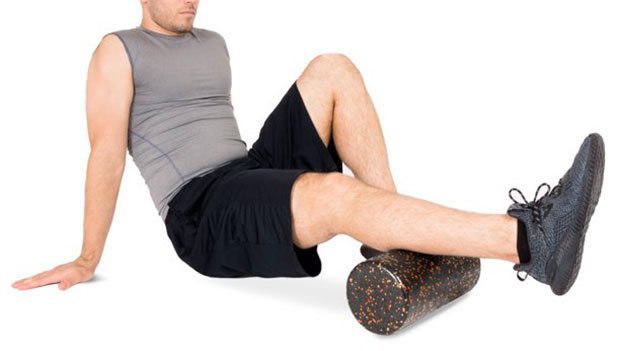
Are you someone who likes a little extra firmness? Go for the Prosource High-Density roller, which excels because of its simplicity. It's a very solid, hard piece of foam that delivers intense pressure relief to your muscles. The ProsourceFit High Density comes in four different length sizes, but the firmness never varies. When we say this is the best high-density foam roller, we mean it. There's basically no give to this thing, which is great if that's what you're looking for. If you like some cushion, though, look elsewhere.
- Key feature: Firmer feel for deeper massaging
- Footprint: 6" D x 12" L, 6" D x 18" L, 6" D x 24" L, and 6" D x 36" L
- Materials: High-density foam
BUY: ProsourceFit High Density
Best Budget Foam Roller - Pro-Tec 4" x 12"

Some foam rollers can cost upwards of $60, which can be over budget for many. Priced at under $20, the Pro-Tec 4x12 foam roller offers an intense all-over massage for a price that won't break the bank. It uses a shorter, more dense design to deliver deeper relief for trigger points. And with an extra-firm feel, it doesn't take much rolling to work out serious knots.
It's also compact enough to throw in your gym bag or bring to a Pilates class. The extra firmness also promotes durability, so you can enjoy muscle release for years to come.
- Key feature: Compact with an extra-firm feel for intense massaging
- Footprint: 4" D x 12" L
- Materials: High-density foam
Who is a Foam Roller Best For?
You don't have to be a total gym junkie to use a foam roller—foam rollers work well for pretty much anyone who's engaged in some sort of physical activity or anyone who sits in one position for a long period of time. But what does a foam roller actually do? They help lengthen the fascia that covers muscles so that you don't wind up with tight muscles and knots. If you lift weights, this is an especially effective tool for working out sore muscles. And whether you work in a sedentary position all day (like at a desk job) or are engaged in strenuous activity all day, a foam roller can be of use. By using a combination of friction and gravity, a foam roller massages different areas of your body so you can keep your muscles refreshed and loose.
How to Foam Roll
If you're tired of feeling stiff and tight and have decided a roller is right for you, you may still be wondering exactly how to use a foam roller. Or you may already own one but fear you're not foam rolling correctly. It might seem self-explanatory, but there is some technique that goes into foam rolling that can help you get the most out of your rolling session. You can start by rolling back and forth to create friction in order to stretch out the fascia. This may resemble something like using the roller as a rolling pin on areas like your hamstrings or trips. We list descriptions of other helpful foam rolling exercises below.
If you're looking for more of an intense stretching session, you can put yourself on top of the roller, which equates to more gravity you can enforce on the muscle. This might look something like placing the roller underneath you so that it's situated on your upper back, and gently rolling back and forth on top. By putting more pressure on the muscle you're rolling, you can experience a greater lengthening of the fascia.
Another way to foam roll is to hold still on an area that's been giving you a lot of trouble. By applying pressure this way, you can target trigger points to help melt away any knots.
Finally, if you'd like to treat yourself to a full-body massage, you can foam roll from the bottom up. You can start with your calves, then switch to your hamstrings, and then your glutes. This might look like sitting on top of the roller with one ankle crossed over the opposite knee to target one glute at a time. Then, you can flip to hit your quads and the sides of your hips before moving to your upper back and shoulders. Try to avoid covering your lower back though: This could put excess strain on the lumbar region and spinal discs.
What to Look for in a Foam Roller
Foam rollers may look simple enough, but there are a few key things you should look for when purchasing one.
Density
Do you know how some people like softer beds while others prefer a firmer mattress? The same philosophy applies to foam rollers...kind of. Yes, your preference may play a big part in it, but the density you choose may also come down to why you're using a foam roller in the first place, as well as your experience using one. We'll break down the three density levels here.
- Soft-density foam rollers are less rigid and provide the most cushion when you roll on them. This means they'll feel good on your sore muscles, but you won't get the sensation of a masseuse's hands digging into the knots you really need untangled. It also means these rollers will lose their shape faster. On the bright side, they're great for beginners because you can teach yourself proper technique before moving up in firmness.
- Medium- or moderate-density foam rollers are exactly what they sound like. You'll get plenty of firmness but some cushion as well. These are typically used by people who foam roll with some frequency before and after workouts, or during Pilates or yoga class. As you could probably guess, they'll keep their shape a little longer than soft-density rollers but not as long as...
- High-density foam rollers are rock-solid firm, and while that might sound uncomfortable, they provide a lot of benefits. For one, you can have a more concentrated pressure on your tight muscles, and you won't have to roll for quite as long to get that sought-after relief. Again, it's that hurts-so-good feeling that's unpleasant for a second before you enter a state of catharsis. Because they're so firm, they'll keep their shape the longest.
Size
You'll want to pay more attention to a foam roller's length than its diameter (which is usually anywhere from three to six inches). Shorter foam rollers, those in the 12- to 24-inch range, are generally called short rollers and are better for targeting specific parts of the body. So, if you have more calf pain than back pain, you'd probably want to go for something like this for more even pressure. It goes without saying, but these are also better for travel purposes.
Larger foam rollers, anything above 24 inches and up to 36 inches are better for larger muscle groups (the back and chest) and are used more for stretching.
Foam rollers can be sold in differing densities and sizes: a 12-inch high-density roller, a 36-inch soft-density foam roller, a 24-inch moderate-density foam roller, and more.
One more category is half foam rollers, which as the name suggests are half the size of traditional ones (either in diameter or length). These are reserved for leg and foot stretches, mainly your foot arch. Like shorter foam rollers, they can also be used for more targeted pressure on a specific body part.
Material
Foam rollers are made of, well, foam, but there are different types of foam, each with its own durability, stability, smell, and feel. There are too many to list here, but it's important to do your research because some lower-end foam rollers may be made of toxic materials. If you have any skin allergies or conditions, it's also important to find out what your foam roller is made of to ensure it won't cause any breakouts.
Texture
Foam rollers can be smooth, or they can have ridges on them and each act differently. The smooth ones feel like the palm of someone's hands pressing into your muscles and provide consistent pressure as it rolls along your body. Ridges feel more like fingers, or even just the fingertips, pressing into you.
READ THIS NEXT: You're Probably Not Foam Rolling Correctly
FAQs About Foam Rollers
Is a bumpy or smooth foam roller better?
One isn't necessarily better than the other, it's more about which one is right for you. Generally, the smoother the foam roller, the less friction takes place, making them a good option for beginners who are just starting to get their feet wet with foam rollers. For athletes, weightlifters, or those who are looking for a deeper massage, a bumpy roller may be a better choice.
What is the best size foam roller to get?
The best size foam roller for you will depend on which muscles you're trying to target most often. Typically, the longer the roller, the easier it is to cover larger muscles at once like your traps and hamstrings. Shorter, more dense rollers can be good for targeting pressure points in your shoulders or calves.
How often should I use a foam roller?
The nice thing about foam rollers is there is no such thing as overuse. Whether you sit in a sedentary position all day or are active in the gym or in sports, anyone can benefit from foam rolling for 15-20 minutes every day to keep their muscles as flexible and stress-free as possible.
Foam rolling more often can help to prevent injuries by reducing soreness and tightness. Challenge yourself to a 30-day foam roll challenge, and see how much better your body and muscles feel after.


